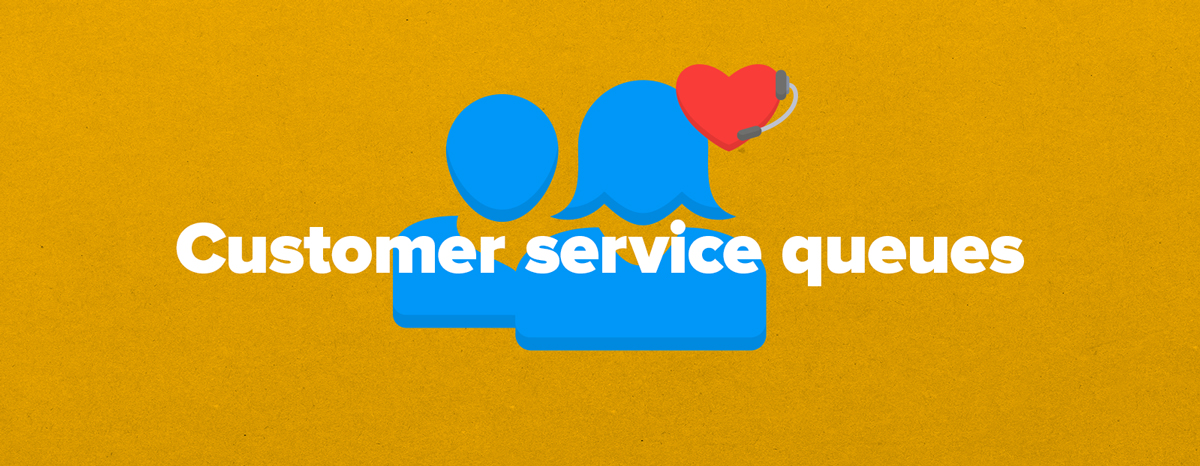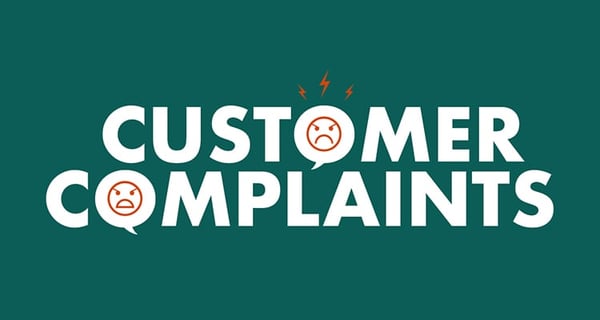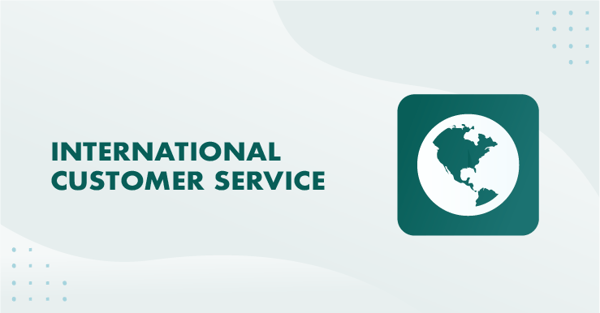Post summary:
- Have all information at your fingertips
- How to help your customers help themselves
- Make sure the request ends up in the right hands
How do you stay on top of your customer service queues?
When you login and the first thing you see is a backlog of customer emails, it can be overwhelming, right?
Today, more than ever, it’s essential to provide great customer service.
And it’s easy to see why.
Research by The Rockefeller Corporation found that 82% of customers will leave you and shop elsewhere if they are unhappy with the service you provide or if they feel that you do not care about them.
And when customers are unhappy, they will share their experience.
According to White House Office of Consumer Affairs, an unhappy customer will tell between 9-15 people about their experience While 13% of unhappy customers will tell more than 20 people.
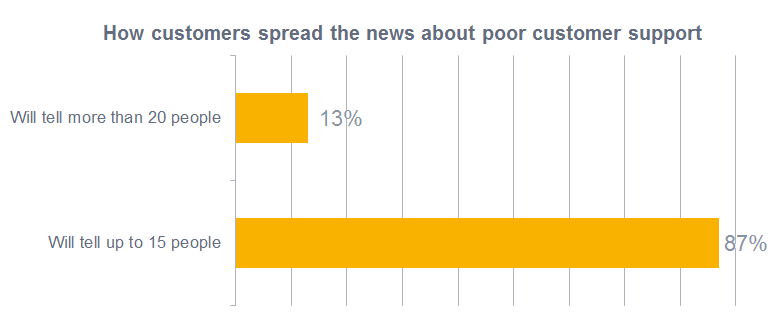
And research by Nielsen-McKinsey found that a negative post on social media has the same impact on a customers' decision as five positive social media posts!
These are the kind of numbers you want to avoid. The question is how?
Well, according to Fonolo 82% of customers say the number one factor to great customer service is having their issues resolved quickly.
Of course, your goal is to respond and solve all customer issues quickly and go above and beyond customers’ expectations.
But then you are trying to cope with an overloaded customer support inbox, which might become a real challenge. And if you don’t have enough support resources, you’ll need to get smarter about how you manage your incoming customer support requests.
This is where customer service software can help.
Today, I want to give you some ideas that you can apply to provide a more responsive and well-managed customer service. These ideas will help you turn support into a painless process and reduce customer service queues.
And, most importantly, give your customers what they want – quick solutions to their problems.
5 ways to manage your customer service queues
Here are five ways customer service software can help you handle your customer service queues.
1. Reduce response times
Good communication is vital and customers hate waiting.
But just how important are response times?
The answer: Very important!
A survey by Nielsen shows that 33% of customers' would still recommend a brand that was quick to reply, even if the response was not complete. This is nearly double the number of customers (17%) who would recommend a brand that provided a complete response, but was slow to respond.
So when it comes to providing positive service, be quick!
It's not possible to solve every problem immediately, but customers don’t expect that from you. What they do expect is that you give them some kind of response quickly. For example, you can inform them that you received the request and are now working on it.
However, according to our own Customer Service Benchmark report, we found that 90% of companies (of 1,000) do not acknowledge or inform the customer that an email has been received.
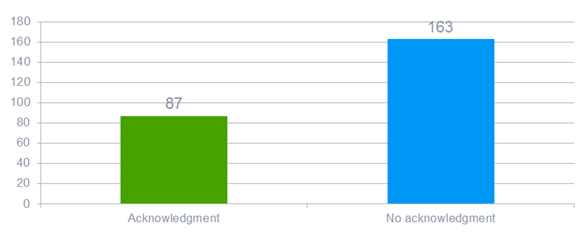
That’s a pity, because if you can reply to the customers’ requests within a few minutes, you can expect that customers are more patient and are happier to wait for a more complete reply.
But not only that.
Responding to your requests straight away would work to your advantage when it comes to reducing the queue. Why? If the customers who address support via email or a web form don’t get a reply for some time, then they start doubting if the support team even received their request.
While waiting for a reply, they may call you on the phone, write you another email or reach you through any other channel. Before you know it, you’ve got requests piling up from the same customer, on the same topic.
That's not a situation where you want to be, is it?
If you want to reduce the number of requests, never leave your customers in limbo. And since there are simply not enough minutes in a day to respond each time a customer contacts you, customer service software can be a real help.
The time-saving trick here is that the software allows you to send an automated response when a request has been received. That’s how you let your customer know that you got their request and you are working on it, which is the same as replying: “I got this under control!”
Another way of speeding up response times is to use customer support email templates. You can create and upload email templates into the system to help you quickly respond to multiple requests that are similar in topic.
2. Have all information at your fingertips
The next step, when you receive a customer request is, of course, to solve it as quickly as you can and, preferably, in the first reply.
But the hard truth is that not all customer requests can be solved straight away. They can be complex and require several follow-ups. The goal here is to reduce the number of these follow-ups to a minimum and ensure that the communication between you and the customer is as smooth and accurate as possible.
This can be achieved if you already have information about who the customer is. In other words, you need to have all the relevant information at your fingertips to solve the request much faster.
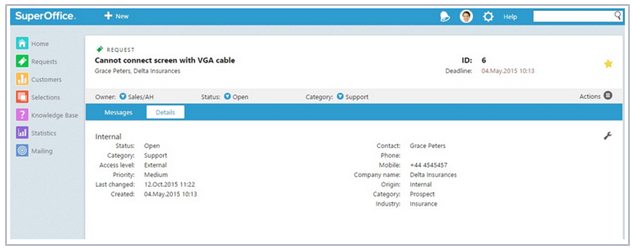
Instead of spending time trying to dig out all the information from various sources, you can use customer service software to track all your interactions with customers. This gives you a detailed view of the customer’s profile and allows you to get straight on the case with no delays. The quicker you know who the customer is, the quicker you can identify the problem and take care of it.
3. Prioritize customer requests
It goes without saying that you want to provide great support to every customer. And when helping many people, it’s critical to stay organized and be able to prioritize your queue.
When deciding on your priorities, you will have to consider the following factors:
- Are all your customers the same? Do specific segments of your customers get priority against other ones?
- How long has the customer been waiting for a response?
- Does the customer submitting a request for the first time have a higher priority than others? After all, there’s only one chance to give a good first impression.
- Should the re-opened cases that were bouncing back and forth, be dealt with first?
However, it all boils down to this – no matter what your priorities are, the key is to always keep things moving!
So how do you know which request you need to take care of next?
It's not like you can browse through an endless email queue every time, is it?
Well, this is when customer service software comes to rescue.
Customer service software can be configured according to your criteria. For example, any email older than 2 hours that has not been assigned is to be prioritized over others. Then, all you need to do is ask the system to get the next request in queue. And this will be the request with the highest priority at that moment. Then when you’re done with that, you can move on to the next with one click. That’s all it takes for you to stay on top of things!
Plus, with out-of-the-box customer service reports, you can access all the data you need to make improvements to service quality.
4. Make sure the request ends up in the right hands
Another way to organize your workflow and solve your requests with speed and accuracy is to make sure that they come up not only at the right time, but also get into the right hands.
I’m going to give you a familiar scenario: you receive a request and you are not quite sure how to solve it as you do not have the knowledge or information you need to respond. The clock is ticking away, and you are seeking for help from your colleagues, while your customer is out there waiting for a solution. As each second passes, the customer becomes more and more unhappy.
It’s impossible to know everything. What you can do though, is make sure that the request goes straight to someone who knows how to solve an issue.
If you have customer service software implemented, you can configure it to allocate the requests to the team members who can solve it straight away. For example, you can create a mailbox, such as it@support.com and configure your system to send all emails as request to your IT help desk. The same goes for accounting, sales and other departments. This way, the right person can respond to the customer straight away without the needless forwarding!
What matters most is that the request ends up in the right hands.
5. Help your customers help themselves
Have you ever thought that one way to reduce customer requests in your queue is actually to let your customers solve their issues themselves?
It sounds funny, but the fact is that 50% of customers think it’s important to solve product or service issues themselves and 70% expect a company’s website to include a self-service application.
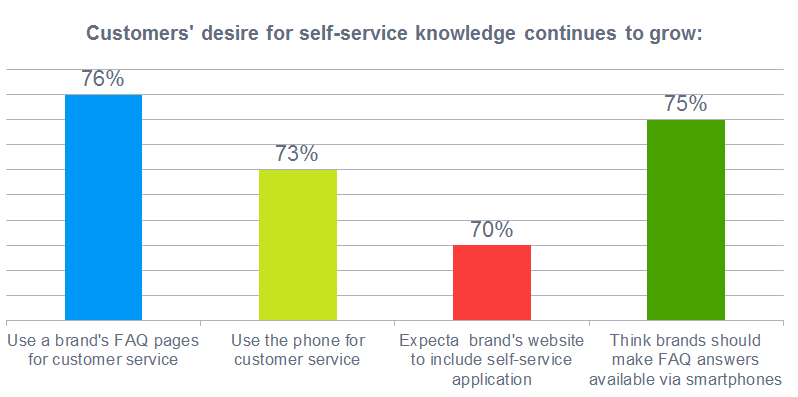
Make sure that you are allowing customers to help themselves.
With customer service software you can build a customer center, where your customers can log in, view their request history, ask questions and search a knowledge base and the library of FAQ’s at any time they want.
And once you provide the platform for self-service you can track what people are searching for the most and then update the content to provide helpful and relevant information.
In addition, you can read between the lines and see what might be lacking based on the searches and keywords and add that information to your portal. That’s how you proactively help your customers with the knowledge they need; and in this way you help yourself by reducing your customer service queues!
Conclusion
There are several effective ways to dealing with your customer service queues.
Sure, you can work on becoming a more productive customer support team and take steps to reduce the number of request coming in. By all means, this is worth doing, but the main goal is not only to reduce the number of requests. The key is to provide excellent customer service.
If you put too much focus on just removing customer requests from the queue as quickly as possible, the quality of your response may drop and then you run the risk that your customers will feel they are being treated rudely and/ or being rushed out.
Luckily, there is another way.
You can create outstanding customer support with the help of the customer service software. While the software takes away the strain of an overloaded queue, you can concentrate on optimizing your customer support processes, reducing your customer service queues and providing a positive experience.
That’s how you show the customers that you care about them.
To recap, here's how to manage customer service queues:
- Acknowledge emails and respond quickly
- Have all customer information ready
- Prioritize important customer emails
- Forward emails to the correct department
- Offer a self-service option on your website
What other ways do you have to tackle your customer service queues?
Let me know in the comments below.
P.S. If you got something valuable from this blog post, remember to tweet about it here!
